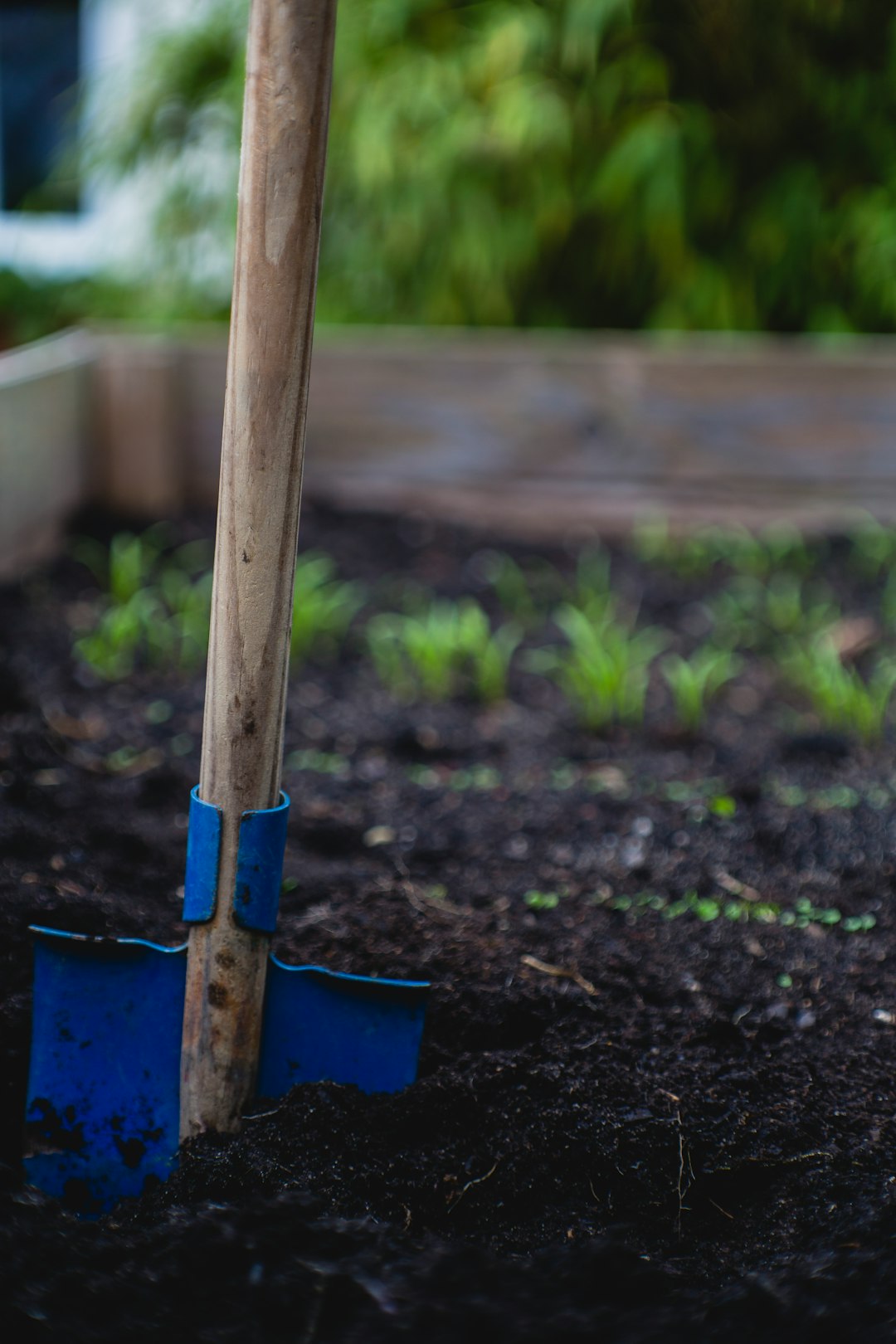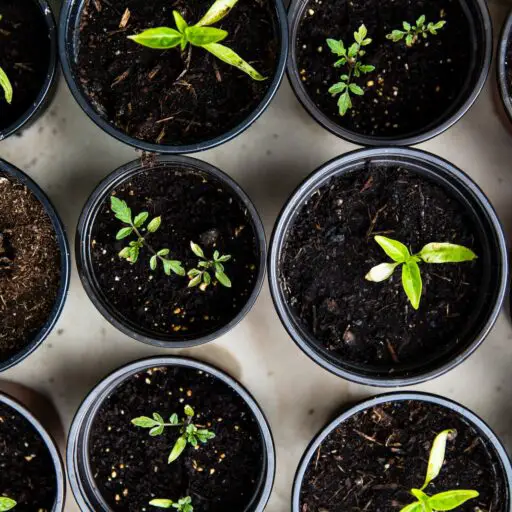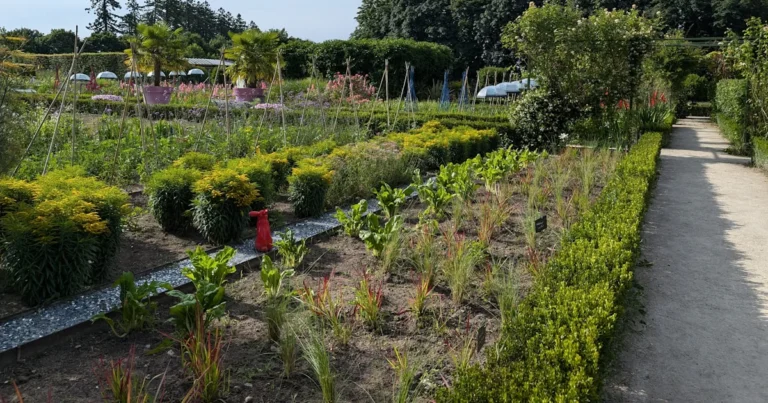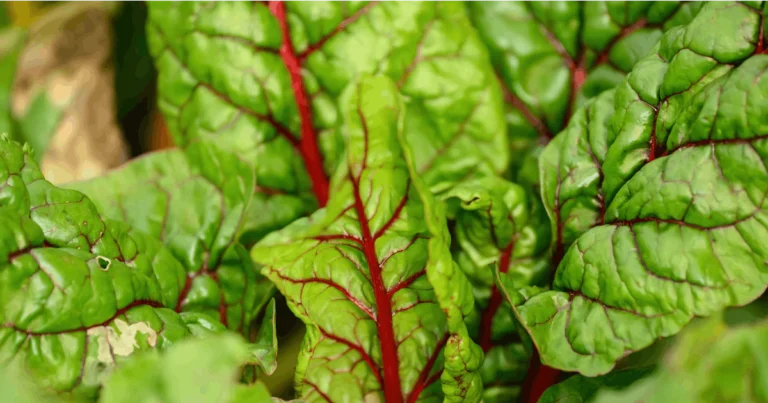Support our educational content for free when you purchase through links on our site. Learn more
Are you ready to transform your neighborhood into a lush, green oasis? Starting a sustainable community garden is not just about planting seeds; it’s about cultivating connections, fostering community spirit, and promoting environmental stewardship. Did you know that community gardens can increase fruit and vegetable consumption by 1.4 servings per day for participating households? Imagine the impact this could have on your community’s health! In this article, we’ll guide you through 10 essential steps to kickstart your sustainable community garden, ensuring it thrives and brings joy to all involved.
From securing the perfect location to engaging volunteers, we’ll cover everything you need to know to create a flourishing garden that benefits everyone. So, grab your gardening gloves and let’s dig into the dirt of community gardening!
Key Takeaways
- Engage Your Community: Build a team of dedicated volunteers to support your garden.
- Choose the Right Location: Look for land with ample sunlight and water access.
- Plan Your Garden: Design a layout that maximizes space and promotes biodiversity.
- Implement Sustainable Practices: Use composting, rainwater harvesting, and organic pest control.
- Celebrate Success: Host events to foster community spirit and keep everyone motivated.
Ready to get started? 👉 Shop Gardening Tools on: Amazon | Walmart | Home Depot and equip yourself for a successful gardening journey! 🌼
Table of Contents
Quick Tips and Facts
The Roots of Community Gardening: A Sustainable History
What Is a Sustainable Community Garden?
Why You Should Start a Community Garden Today!
10 Essential Steps to Launch Your Community Garden
Choosing the Right Location for Your Garden Oasis
Building a Strong Community: Engaging Volunteers and Members
Creating a Sustainable Garden Plan: Design and Layout Tips
Choosing the Best Plants for Your Community Garden
Watering Wisely: Sustainable Irrigation Techniques
Composting 101: Turning Waste into Garden Gold
Learn More About Gardening with a Horticulture Degree
Request Program Information
Request Information
Related Stories: Inspiring Community Garden Successes
College of Continuing & Professional Studies: Expanding Your Gardening Knowledge
Conclusion
Recommended Links
FAQ
Reference Links
Quick Tips and Facts
To get started with a sustainable community garden, it’s essential to understand the power of community gardens 🌱, which can be found in our related article about What is the Power of Community Gardens? 20 Transformative Benefits 🌿 2025. Here are some quick tips and facts to consider:
- Community gardens provide access to fresh fruits and vegetables, promote community collaboration, and serve as a community gathering point.
- They can increase fruit and vegetable consumption, with households involved in community gardens consuming 1.4 more servings per day.
- Community gardens can be used to educate youth about horticulture and food origins.
- When starting a community garden, consider factors like available land, community engagement, resources, and rules.
Benefits of Community Gardens
Community gardens offer numerous benefits, including:
- Providing food and beauty to the local community
- Increasing access to fresh produce, especially in underserved areas
- Serving as a community gathering point and promoting social connections
- Educating youth about horticulture and food origins
- Supporting local food systems and reducing transportation emissions
The Roots of Community Gardening: A Sustainable History

Community gardening has a rich history, dating back to the 19th century. The concept of community gardens has evolved over time, with a focus on sustainability, social justice, and community building. According to the University of Minnesota, community gardens have been shown to have a positive impact on local communities, providing access to fresh produce and promoting community collaboration.
Historical Context
Community gardens have been around for centuries, with early examples found in European cities. In the United States, community gardens gained popularity during the Great Depression, as a way to provide food and employment for urban residents. Today, community gardens can be found in cities and towns around the world, with a focus on sustainability, social justice, and community building.
What Is a Sustainable Community Garden?
A sustainable community garden is a shared green space where members of a community come together to grow their own fruits, vegetables, and flowers. These gardens are designed to be environmentally friendly, using techniques like composting, rainwater harvesting, and natural pest control. As noted by ForestNation, sustainable community gardens demand a high level of organization and planning.
Key Characteristics
Sustainable community gardens have several key characteristics, including:
- A focus on environmental sustainability and social justice
- Use of natural and organic gardening practices
- Community involvement and participation
- Education and outreach programs
- A commitment to accessibility and inclusivity
Why You Should Start a Community Garden Today!
Starting a community garden can have a positive impact on your community, providing access to fresh produce, promoting social connections, and supporting local food systems. As noted by See What Grows, community gardens can also serve as a platform for education and outreach, teaching people about sustainable gardening practices and the importance of local food systems.
Benefits for the Community
Community gardens can benefit the community in many ways, including:
- Providing access to fresh, healthy produce
- Promoting social connections and community engagement
- Supporting local food systems and reducing transportation emissions
- Educating people about sustainable gardening practices and the importance of local food systems
- Serving as a community gathering point and promoting social cohesion
10 Essential Steps to Launch Your Community Garden
Launching a community garden requires careful planning and execution. Here are 10 essential steps to consider:
- Find available land: Look for land that is suitable for gardening, with access to water and sunlight.
- Engage your community: Build a team of dedicated volunteers and engage with the broader community to build support for the garden.
- Find resources: Secure funding, tools, and equipment to support the garden.
- Decide what to plant: Choose plants that are suitable for the local climate and meet the needs of the community.
- Prep and build the site: Prepare the soil, build beds, and install irrigation systems.
- Determine rules and regulations: Establish rules for garden use, maintenance, and governance.
- Establish a budget: Create a budget and secure funding to support the garden.
- Develop a communication strategy: Establish a system for communicating with garden members and the broader community.
- Build partnerships: Partner with local organizations and businesses to support the garden.
- Maintain and evaluate: Regularly maintain the garden and evaluate its impact on the community.
Additional Tips
Additional tips for launching a community garden include:
- Start small: Begin with a small plot of land and expand as the garden grows.
- Be flexible: Be prepared to adapt to changing circumstances and challenges.
- Build a diverse team: Recruit a diverse team of volunteers with a range of skills and expertise.
- Engage with the community: Regularly engage with the broader community to build support and promote the garden.
Choosing the Right Location for Your Garden Oasis
Choosing the right location for your community garden is crucial to its success. Consider factors like sunlight, water access, and soil quality when selecting a site. As noted by the University of California, the ideal location for a community garden should receive at least 6 hours of direct sunlight per day.
Site Selection Criteria
When selecting a site for your community garden, consider the following criteria:
- Sunlight: The site should receive at least 6 hours of direct sunlight per day.
- Water access: The site should have access to a reliable source of water.
- Soil quality: The site should have well-draining, fertile soil.
- Accessibility: The site should be easily accessible for garden members and the broader community.
Building a Strong Community: Engaging Volunteers and Members
Building a strong community is essential to the success of a community garden. Engage volunteers and members by providing opportunities for participation, education, and socialization. As noted by Community Gardening, community gardens can serve as a platform for community events and activities.
Strategies for Engagement
Strategies for engaging volunteers and members include:
- Provide opportunities for participation: Offer opportunities for garden members to participate in decision-making, planning, and maintenance.
- Offer education and training: Provide education and training on sustainable gardening practices, garden maintenance, and community building.
- Host community events: Host community events, such as workshops, potlucks, and festivals, to promote socialization and community building.
Creating a Sustainable Garden Plan: Design and Layout Tips
Creating a sustainable garden plan requires careful consideration of design and layout. Consider factors like soil quality, water access, and sunlight when designing your garden. As noted by Garden Design Magazine, a well-designed garden can be both beautiful and functional.
Design Principles
Design principles for a sustainable garden include:
- Efficient use of space: Use space efficiently to maximize productivity and minimize waste.
- Water conservation: Use water-efficient irrigation systems and practices to conserve water.
- Soil conservation: Use techniques like mulching and cover cropping to conserve soil and reduce erosion.
- Biodiversity: Promote biodiversity by planting a variety of fruits, vegetables, and flowers.
Choosing the Best Plants for Your Community Garden
Choosing the right plants for your community garden is crucial to its success. Consider factors like climate, soil quality, and sunlight when selecting plants. As noted by Burpee, choose plants that are well-suited to the local climate and soil conditions.
Plant Selection Criteria
When selecting plants for your community garden, consider the following criteria:
- Climate: Choose plants that are well-suited to the local climate.
- Soil quality: Choose plants that are tolerant of the local soil conditions.
- Sunlight: Choose plants that require the right amount of sunlight.
- Space: Choose plants that are compact or sprawling, depending on the available space.
Watering Wisely: Sustainable Irrigation Techniques
Watering wisely is essential to the success of a community garden. Use sustainable irrigation techniques like drip irrigation and rainwater harvesting to conserve water. As noted by Rain Bird, drip irrigation can reduce water usage by up to 50%.
Irrigation Strategies
Irrigation strategies for a community garden include:
- Drip irrigation: Use drip irrigation to deliver water directly to the roots of plants.
- Rainwater harvesting: Collect and store rainwater for use in the garden.
- Soil moisture monitoring: Monitor soil moisture levels to avoid overwatering.
- Mulching: Use mulch to retain moisture and reduce evaporation.
Composting 101: Turning Waste into Garden Gold
Composting is a key component of a sustainable community garden. Turn waste into garden gold by composting food scraps, leaves, and other organic materials. As noted by EPA, composting can reduce waste and create a nutrient-rich soil amendment.
Composting Tips
Composting tips include:
- Collect organic materials: Collect food scraps, leaves, and other organic materials for composting.
- Create a compost pile: Create a compost pile with a mix of “green” and “brown” materials.
- Maintain the pile: Maintain the compost pile by turning it regularly and keeping it moist.
- Use the compost: Use the finished compost to amend the soil and promote healthy plant growth.
Learn More About Gardening with a Horticulture Degree
Learn more about gardening with a horticulture degree from a reputable institution. A horticulture degree can provide the knowledge and skills needed to design, maintain, and manage a community garden. As noted by Oregon State University, a horticulture degree can lead to a career in gardening, landscaping, or environmental conservation.
Horticulture Programs
Horticulture programs are available at many institutions, including:
- Oregon State University: Offers a degree in horticulture with a focus on sustainable gardening practices.
- University of California: Offers a degree in horticulture with a focus on environmental conservation.
- Cornell University: Offers a degree in horticulture with a focus on gardening and landscaping.
Request Program Information
Request program information from institutions that offer horticulture degrees. Learn more about the curriculum, faculty, and career opportunities. As noted by National Gardening Association, a horticulture degree can provide the knowledge and skills needed to succeed in the gardening industry.
Program Information
Program information includes:
- Curriculum: Learn about the courses and topics covered in the horticulture program.
- Faculty: Learn about the faculty and their expertise in horticulture.
- Career opportunities: Learn about the career opportunities available to graduates of the horticulture program.
Request Information
Request information from community gardens and gardening organizations. Learn more about their programs, services, and resources. As noted by Community Gardening, community gardens can provide a wealth of information and resources for gardeners.
Gardening Resources
Gardening resources include:
- Community gardens: Learn about community gardens in your area and their programs and services.
- Gardening organizations: Learn about gardening organizations and their resources and services.
- Online forums: Participate in online forums and discussion groups to connect with other gardeners and learn about gardening best practices.
Related Stories: Inspiring Community Garden Successes
Read related stories about inspiring community garden successes. Learn about the challenges and triumphs of community gardens and the people who make them happen. As noted by Garden Design Magazine, community gardens can be a source of inspiration and motivation for gardeners.
Community Garden Successes
Community garden successes include:
- Urban gardens: Learn about urban gardens that are thriving in cities and towns.
- Rural gardens: Learn about rural gardens that are providing fresh produce to local communities.
- School gardens: Learn about school gardens that are teaching children about gardening and nutrition.
College of Continuing & Professional Studies: Expanding Your Gardening Knowledge
Expand your gardening knowledge with courses and programs from the College of Continuing & Professional Studies. Learn about sustainable gardening practices, garden design, and horticulture. As noted by University of Minnesota, the College of Continuing & Professional Studies offers a range of courses and programs for gardeners.
Gardening Courses
Gardening courses include:
- Sustainable gardening: Learn about sustainable gardening practices and how to create a environmentally friendly garden.
- Garden design: Learn about garden design and how to create a beautiful and functional garden.
- Horticulture: Learn about horticulture and the science of plant growth and development.
Conclusion

Starting a sustainable community garden is not just about growing plants; it’s about cultivating community, fostering connections, and promoting environmental stewardship. By following the steps outlined in this article, you can create a thriving garden that benefits everyone involved. Remember, the journey may have its challenges, but the rewards—fresh produce, community bonding, and educational opportunities—are well worth the effort! 🌱
In summary, community gardens provide access to fresh fruits and vegetables, enhance community engagement, and promote sustainable practices. While there may be hurdles like securing land and funding, the positives far outweigh the negatives. We confidently recommend diving into this rewarding venture. With the right planning and community support, your garden can flourish and become a cherished asset for all.
Recommended Links
- 👉 Shop Gardening Tools on: Amazon | Walmart | Home Depot
- Books on Sustainable Gardening:
FAQ

What are the key steps in planning a sustainable community garden?
Understanding the Planning Process
- Identify Community Interest: Gauge the interest level within the community through surveys or meetings.
- Secure Land: Find a suitable plot that has access to water and sunlight, and check zoning regulations.
- Engage Stakeholders: Form a committee that includes community members, local organizations, and potential partners.
- Create a Garden Plan: Design the layout, choose plants, and decide on garden rules.
- Establish a Budget: Determine costs for tools, seeds, and maintenance, and explore funding options.
Read more about “What is the Power of Community Gardens? 20 Transformative Benefits 🌱 …”
How do you build community support for a sustainable garden project?
Strategies for Engagement
- Host Informational Meetings: Share the benefits of the garden and invite community members to participate.
- Create a Social Media Presence: Use platforms like Facebook and Instagram to share updates and engage with the community.
- Involve Local Businesses: Seek sponsorships or partnerships with local businesses that can provide resources or funding.
- Organize Events: Plan community events such as planting days, workshops, or harvest festivals to foster engagement and excitement.
Read more about “How to Start a Community Garden at School: 9 Essential Steps 🌱 …”
What are the best eco-friendly practices for maintaining a community garden?
Sustainable Maintenance Techniques
- Composting: Turn kitchen scraps and yard waste into nutrient-rich compost to enrich the soil.
- Rainwater Harvesting: Collect rainwater for irrigation to conserve water resources.
- Organic Pest Control: Use natural methods to manage pests, such as introducing beneficial insects or using homemade sprays.
- Crop Rotation: Practice crop rotation to maintain soil health and reduce pest buildup.
Read more about “How Is a Community Garden Run? 7 Essential Insights 🌱 …”
How can a community garden promote long-term sustainability and engagement?
Ensuring Longevity
- Education Programs: Offer workshops and classes to teach sustainable gardening practices and engage community members.
- Regular Maintenance Days: Schedule consistent maintenance days to keep the garden thriving and encourage participation.
- Feedback Mechanism: Create a system for community members to share their thoughts and ideas for improvement.
- Celebrate Successes: Acknowledge and celebrate milestones to keep the community motivated and engaged.
Read more about “What Makes a Community Garden Successful? 7 Essential Factors 🌱”
What are the funding options for starting a sustainable community garden?
Exploring Financial Resources
- Grants: Look for local, state, and federal grants specifically for community gardening projects.
- Fundraising Events: Organize events such as bake sales, plant sales, or community dinners to raise funds.
- Sponsorships: Approach local businesses for sponsorships in exchange for advertising opportunities.
- Membership Fees: Consider charging a small fee for garden plots to help cover costs.
Read more about “What is a Community Garden? 10 Inspiring Benefits & Ideas 🌱 …”
Reference Links
- University of Minnesota – Steps to Start a Community Garden
- Forest Nation – How to Start a Sustainable Community Garden
- See What Grows – Sustainable Gardening Tips for Your Community Garden
- EPA – Composting
- Rain Bird – Drip Irrigation
- Burpee – Plant Selection
- National Gardening Association
By following these guidelines and utilizing the resources provided, you can embark on a fulfilling journey to create a sustainable community garden that benefits everyone involved. Happy gardening! 🌼





